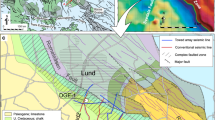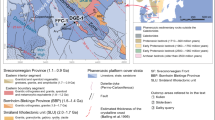Conclusion
South Africa will always require deep exploration boreholes to evaluate potential new mines. Seismic, and other geophysical surveys, provide useful tools for the exploration geologist but cannot replace a physical core sample. The contractor and supply companies must concentrate on techniques and equipment that will provide quicker drilling and reduced risk.
Gold price fluctuations and the effect upon revenue received by the mining finance houses who fund exploration projects does cause changes in the level of drilling activity. However, deep exploration drilling for gold is an integral part of South Africa’s mining industry and will continue to be so.
Similar content being viewed by others
References
T.E. Benkes, Economics of Southern African Mineral Exploration, Mineral Deposits of Southern Africa, Geological Society of Southern Africa 1988.
H. Wagner, Technology and a Developing South Africa, Mining Survey No. 2, 1990.
T. Fletcher and D. Williams, The Positive Landing Indicator, South African Drilling Association Symposium 1990.
Author information
Authors and Affiliations
Rights and permissions
About this article
Cite this article
Fletcher, T. Drilling exploration boreholes beyond 4000M in South Africa. Mine Water and The Environment 11, 43–52 (1992). https://doi.org/10.1007/BF02918447
Issue Date:
DOI: https://doi.org/10.1007/BF02918447




